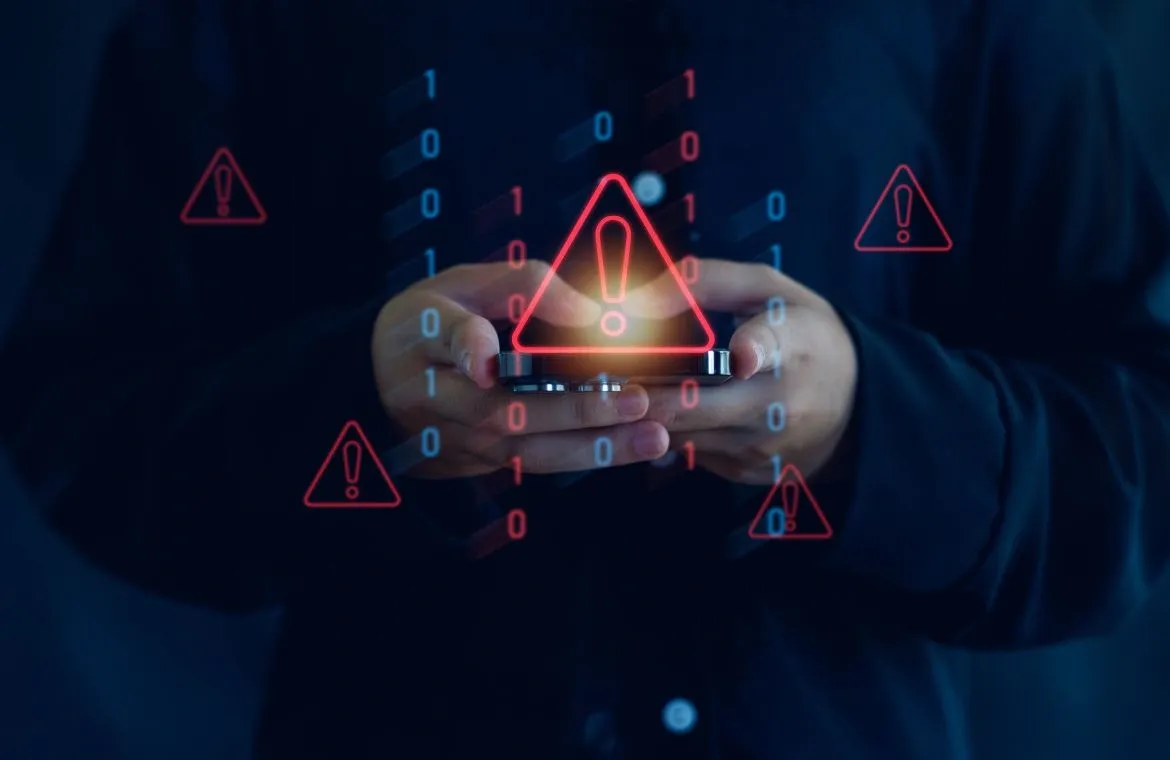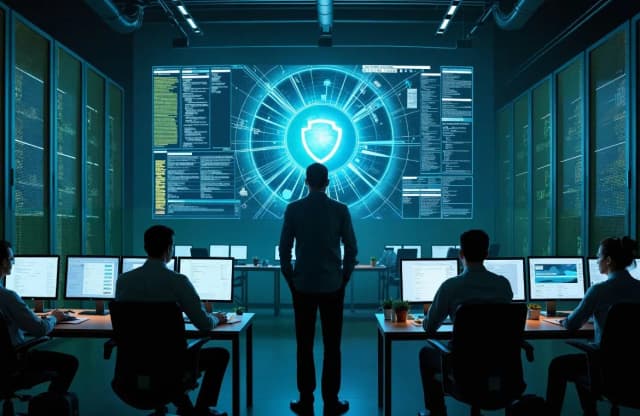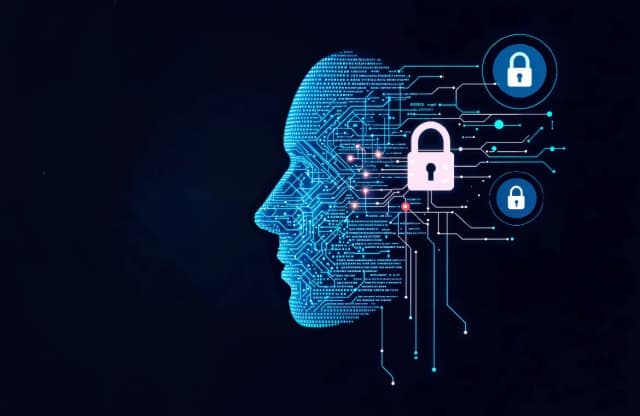Top Cybersecurity Threats and how to deal with them in 2025?

As digital transformation accelerates, cybersecurity threats are evolving faster than ever. Hackers are no longer just opportunistic; they are highly organised, using AI, deepfakes, and advanced malware to target individuals, corporations, and governments.
And, you know that the weakest link in the security chain is often people, not technology. But the good news is that people can also become the strongest line of defence.
In this blog, you will discover the top cybersecurity threats expected in 2025 and learn practical strategies to effectively protect your organisation against them, and how employees can detect threats early, prevent breaches, and strengthen the organisation’s overall security posture
Also read: What is Cyber Security? The Truth About Online Safety
Cybersecurity Threats in 2025
The digital world has turned dangerous. Threat actors now use complex methods to break into even the strongest security systems. Here are the key threats you need to watch out for in 2025.
1. AI-Powered Attacks
AI-powered attacks have become the biggest worry for security leaders. The rise of automated, GenAI-powered attacks creates customised and convincing scams at a massive scale. These attacks exploit AI algorithms to find perfect targets, build realistic scenarios, and create messages that look just like real ones.
Why it’s critical: Traditional cybersecurity measures may struggle against adaptive, AI-driven attacks, making continuous monitoring and AI-enabled defence tools essential.
2. Ransomware and Malware Development
RaRansomware continues to evolve in sophistication. By 2025, Ransomware-as-a-Service (RaaS) is expected to make these attacks more accessible, even to less technically skilled hackers. Fileless malware, which resides in memory rather than being installed on a system, will bypass many endpoint security tools.
Why it’s critical: Organisations must implement strong backup protocols, incident response plans, and endpoint detection systems to mitigate these attacks.
3. Expanding Supply Chain Attacks
Supply chains have become prime targets for attackers. Hardware and software supply chains took the biggest hit, with almost a double increase in attacks. Such attacks are hard to detect because the breach originates outside the organisation’s immediate systems.
Why it’s critical: Vetting vendors, auditing third-party security practices, and monitoring supplier activity are essential to defend against supply chain compromises.
4. IoT Vulnerabilities
The proliferation of Internet of Things (IoT) devices, from smart home appliances to industrial sensors, expands the attack surface. Many IoT devices have default credentials or lack robust security measures, making them easy targets for cybercriminals.
Why it’s critical: Segmentation, regular updates, and strong authentication for IoT devices are crucial to prevent them from becoming entry points for attackers.
5. Social Engineering & Deepfakes
Deepfake social engineering has become common. New attacks happen every five minutes. And most people can't tell the difference between real users and deepfake copies. This makes companies vulnerable when attackers copy trusted contacts.
Why it’s critical: Segmentation, regular updates, and strong authentication for IoT devices are crucial to prevent them from becoming entry points for attackers.
6. Data Breaches & Insider Threats
Unauthorised access to sensitive information remains a major threat. Breaches in finance, healthcare, and retail can result in significant financial loss, reputational damage, and regulatory penalties.
Why it’s critical: Encryption, access control, and continuous monitoring of data systems are necessary to prevent leaks and mitigate the impact if breaches occur.
7. Cloud Misconfigurations
As organisations adopt cloud-first strategies, misconfigured cloud storage, improperly secured APIs, and excessive user permissions become significant vulnerabilities. Misconfigurations are one of the leading causes of cloud-related data breaches.
Why it’s critical: Regular cloud audits, automated configuration checks, and proper access management are key measures to secure cloud environments.
8. Insider Threats
Not all threats come from external attackers. Disgruntled employees, negligent staff, or contractors with elevated access privileges can intentionally or unintentionally compromise sensitive data.
Why it’s critical: Role-based access, monitoring, and employee awareness programs are crucial to detect and prevent insider-related incidents.
How to deal with them by creating a strong defence mechanism?
Modern cyber security threats demand multiple layers of protection. Organisations can substantially lower their attack vulnerability with these six essential defence mechanisms.
1. Zero Trust Mindset
A zero-trust architecture removes all implicit network trust and needs constant verification of devices and users. The system enforces strict access controls that depend on identity, device health, and context.
2. Robust Authentication & Access
Strong identity verification stops attackers from exploiting stolen passwords. Use multi-factor authentication (MFA) and certificate- or token-based methods like OAuth 2.0.
3. Cloud & Supply Chain Security
Supply chain attacks make vendor evaluation crucial. Component authentication helps verify hardware integrity and secure bootloaders. NIST recommends strict "one strike and you're out" policies for counterfeit products. Regular vendor security assessments help reduce third-party risks.
4. Human Firewall
With the right approach, Continuous cybersecurity awareness sessions, phishing simulations, and positive reinforcement for good security behaviour. People can be the strongest defence.
5. IoT Safeguards
Connected devices from factory sensors to smart cameras are prime targets for this, But, what you can do is to change default passwords, segment IoT networks, and use TLS 1.3 encryption for data in transit.
6. Backup & Incident Response
The 3-2-1 backup strategy works best: keep three data copies on two different storage types with one copy off-site. A complete incident response plan should assign specific roles like Incident Manager, Technical Manager, and Communications Manager. Regular drills keep the team prepared.
Building a proactive cybersecurity culture
Your organisation's strongest defence against cyber security threats lies in building a security-focused mindset.
Continuous employee training
Quick response time makes all the difference in cybersecurity. Teams that train regularly spot and stop threats faster. Awareness alone doesn't cut it - training should build practical skills in threat detection, vulnerability management, and incident response.
Simulated phishing and social engineering tests
Your organisation's resilience against social engineering attacks can be tested through realistic simulations. These tests reveal which departments need extra support and allow targeted training where it matters most.
Security-first development practices
Protection measures should be built into the entire software lifecycle, not added as an afterthought. Developers need to model threats during design, use secure coding practices, and run automated security tests in CI/CD pipelines. Security training for developers must go beyond basic awareness.
Regular audits and compliance checks
Security audits create valuable feedback loops that boost your cybersecurity strength over time. These reviews, combined with compliance checks, help you stay current with changing regulations and fix vulnerabilities before attackers can exploit them.
Tools and technologies to strengthen your defences
Modern organisations need powerful security tools to protect their digital assets in today's hostile cyber environment.
- Endpoint Detection and Response (EDR): EDR solutions watch endpoints (desktops, laptops, mobile devices) and respond to threats quickly. Traditional antivirus only checks known threats, but EDR spots suspicious behaviours and indicators of compromise (IOCs) through behavioural analytics.
- Security Information and Event Management (SIEM): SIEM platforms combine and analyse data from your infrastructure live to give you a detailed view of your security status. Security teams can spot threats, break down incidents quickly, and meet regulatory requirements with these solutions.
- Multi-Factor Authentication (MFA): MFA's requirement for multiple forms of identification significantly reduces security breaches. The best security comes from phishing-resistant methods like hardware security keys or biometrics instead of SMS verification.
- Threat intelligence platforms: These platforms turn external threat feeds and internal logs into meaningful, prioritised alerts. Good threat intelligence tools blend data from multiple sources, rank threats by severity, and work with your existing security setup. Your team can focus on real threats instead of false alarms.
- Cloud security posture management (CSPM): CSPM tools find and fix misconfigurations in cloud environments to prevent data breaches. They offer constant monitoring and automated fix workflows.
Conclusion
“As technology races forward, so do the shadows chasing it”, but remember shadows only follow the light. By embedding Zero Trust principles, multi-factor authentication, vigilant cloud monitoring, and a well-trained human firewall, organisations turn potential chaos into calculated control.
Much like a lighthouse standing firm against a restless sea, strong cybersecurity practices illuminate the dangers and guide companies safely through the storm.
Frequently Asked Questions
Q1. What are the most significant cybersecurity threats expected in 2025?
The most significant threats include AI-powered attacks, evolving ransomware, supply chain vulnerabilities, IoT device exploitation, deepfake-powered social engineering, insider threats, and cloud misconfigurations. AI-enhanced malware is particularly concerning, with 60% of global IT experts identifying it as the most worrying AI-generated threat.
Q2. How can organisations build a strong defence mechanism against cyber threats?
Organisations can strengthen their defences by implementing a zero-trust architecture, using robust authentication methods, securing cloud and supply chain operations, creating a human firewall through employee training, implementing IoT safeguards, and maintaining a comprehensive backup and incident response plan.
Q3. What role does employee training play in cybersecurity?
Employee training is crucial in building a proactive cybersecurity culture. Continuous training helps teams identify and neutralise threats faster. Regular simulations and security-first development practices are also essential components of effective training programmes.

TalentSprint
TalentSprint is a leading deep-tech education company. It partners with esteemed academic institutions and global corporations to offer advanced learning programs in deep-tech, management, and emerging technologies. Known for its high-impact programs co-created with think tanks and experts, TalentSprint blends academic expertise with practical industry experience.



